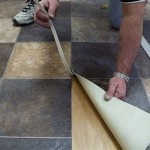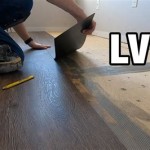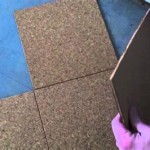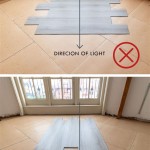Is Vinyl Plank Flooring Safe For Stairs?
Vinyl plank flooring has become a popular choice for homeowners due to its durability, water resistance, and aesthetic appeal. One area where homeowners often consider using vinyl plank is on stairs. However, the question of whether vinyl plank is a safe and practical option for staircases is a crucial one, involving several factors that need careful consideration. This article will delve into the suitability of vinyl plank flooring for stairs, exploring its benefits, potential drawbacks, safety considerations, and proper installation techniques.
Stairs present unique challenges compared to flat surfaces. They experience concentrated foot traffic and are subject to more wear and tear. The angle of each step requires flooring to be securely fastened to prevent slippage and ensure safety. Furthermore, the choice of flooring for stairs must comply with building codes and safety standards to minimize the risk of accidents.
Understanding these challenges is essential before deciding whether vinyl plank flooring is a suitable solution for your staircase. The following sections will examine the key aspects of using vinyl plank on stairs, providing a comprehensive overview of its safety and feasibility.
Durability and Wear Resistance
Vinyl plank flooring is generally known for its durability and resistance to wear, making it a potentially attractive option for high-traffic areas like stairs. The wear layer, which is the top protective coating, determines how well the flooring can withstand scratches, scuffs, and stains. A thicker wear layer translates to greater durability and longer lifespan. When selecting vinyl plank for stairs, choosing a product with a substantial wear layer is crucial to ensure it can handle the constant foot traffic and potential impacts.
However, even with a thick wear layer, vinyl plank can still be susceptible to damage if not properly maintained. Regular cleaning and the use of protective mats can help prolong the life of the flooring. Additionally, the type of vinyl plank – whether it is rigid core, WPC (wood-plastic composite), or SPC (stone-plastic composite) – can influence its durability. SPC vinyl, known for its high density and resistance to indentation, is often a preferred choice for high-traffic areas, including stairs.
It's also important to consider the underlayment used beneath the vinyl plank. A good underlayment can provide cushioning and support, reducing the impact on the flooring and helping to prevent premature wear. The combination of a durable vinyl plank with a suitable underlayment can create a resilient surface that is well-suited for the demands of a staircase.
Despite its inherent durability, vinyl plank flooring is not indestructible. Over time, and with heavy use, it can show signs of wear, especially on the edges and corners of the stairs. Regular inspection and maintenance are necessary to address any issues before they escalate and compromise the safety of the staircase.
Safety Considerations: Slip Resistance and Installation
Slip resistance is a paramount concern when selecting flooring for stairs. Staircases are inherently hazardous areas, and a slippery surface can significantly increase the risk of falls. Vinyl plank flooring typically has a textured surface that provides some degree of slip resistance. However, the level of slip resistance can vary depending on the specific product and its surface treatment.
To enhance slip resistance, stair treads with pre-applied non-slip strips or the addition of aftermarket non-slip tape can be used. These additions provide extra grip and can significantly reduce the likelihood of slips and falls. It is crucial to choose non-slip solutions that are specifically designed for use on stairs and that comply with relevant safety standards.
Proper installation is another critical factor in ensuring the safety of vinyl plank stairs. The planks must be securely attached to the stair treads and risers to prevent them from shifting or coming loose. This typically involves the use of a strong adhesive and, in some cases, mechanical fasteners such as screws or staples. The adhesive must be appropriate for use with vinyl plank and compatible with the substrate of the stairs.
Incorrect installation can lead to several safety hazards. If the planks are not properly adhered, they can move underfoot, creating a tripping hazard. Loose or uneven edges can also snag clothing or cause someone to lose their balance. Therefore, it is essential to follow the manufacturer's installation guidelines carefully and, if necessary, seek professional assistance to ensure the job is done correctly.
Building codes often specify requirements for stair tread depth, riser height, and slip resistance. These codes are designed to ensure that stairs are safe and accessible. When installing vinyl plank flooring on stairs, it's important to verify that the installation complies with all applicable building codes and safety standards. This may involve consulting with a building inspector or a qualified contractor.
Aesthetics and Design Options
Beyond safety and durability, aesthetics play a significant role in the choice of flooring for stairs. Vinyl plank offers a wide range of design options, mimicking the look of natural wood, stone, and other materials. This versatility allows homeowners to create a staircase that complements the overall style of their home. The availability of different colors, textures, and patterns makes it possible to achieve a custom look without the higher cost and maintenance associated with natural materials.
One popular design approach is to use vinyl plank that matches or complements the flooring in adjacent rooms. This creates a seamless transition and a cohesive aesthetic throughout the home. Another option is to use contrasting colors or patterns to create a focal point on the staircase. For example, darker vinyl plank treads paired with lighter-colored risers can create a visually striking effect.
Stair nosing, which is the rounded edge of the stair tread, is an important element to consider when installing vinyl plank on stairs. Nosing provides a finished look and also helps to protect the edges of the planks from wear and tear. It is important to choose a nosing that is compatible with the vinyl plank and that provides a secure and slip-resistant surface. Many manufacturers offer matching nosing specifically designed for use with their vinyl plank products.
The appearance of the staircase can also be enhanced through the use of decorative elements such as stair runners, balusters, and handrails. These elements can add visual interest and personalize the space. When selecting these elements, it's important to consider their compatibility with the vinyl plank flooring and their contribution to the overall safety of the staircase.
While vinyl plank offers numerous aesthetic options, it's important to consider the long-term appearance of the flooring. High-gloss finishes can be more prone to showing scratches and scuffs, while matte finishes tend to be more forgiving. Choosing a durable finish and implementing a regular cleaning schedule can help maintain the appearance of the vinyl plank stairs for years to come.

Luxury Vinyl Tile Seamless Upstairs And Downstairs Solution

Pros And Cons Of Installing Vinyl Flooring On Stairs

Pros And Cons Of Installing Vinyl Flooring On Stairs

An Expert Guide To Vinyl Plank Flooring For Stairs Direct Blog

Is Wood Flooring Safe To Use On Stairs Floor Land

Pros And Cons Of Installing Vinyl Flooring On Stairs Lx Hausys

Vinyl Plank Flooring Stairs Diy Training Center

How To Choose Flooring For Stairs

Lvp Stair Treads Ideas

Can You Install Luxury Vinyl Plank On Stairs
Related Posts








